Last June, French-born U.S. citizen Cyril Derreumaux set out to kayak solo and unsupported from San Francisco Bay to Hawaii aboard a 23-foot-long custom carbon fiber kayak. The voyage has been completed by paddle power just twice before—first by Ed Gillet in 1987 and then by Antonia de la Rosa aboard a souped-up SUP in 2019.
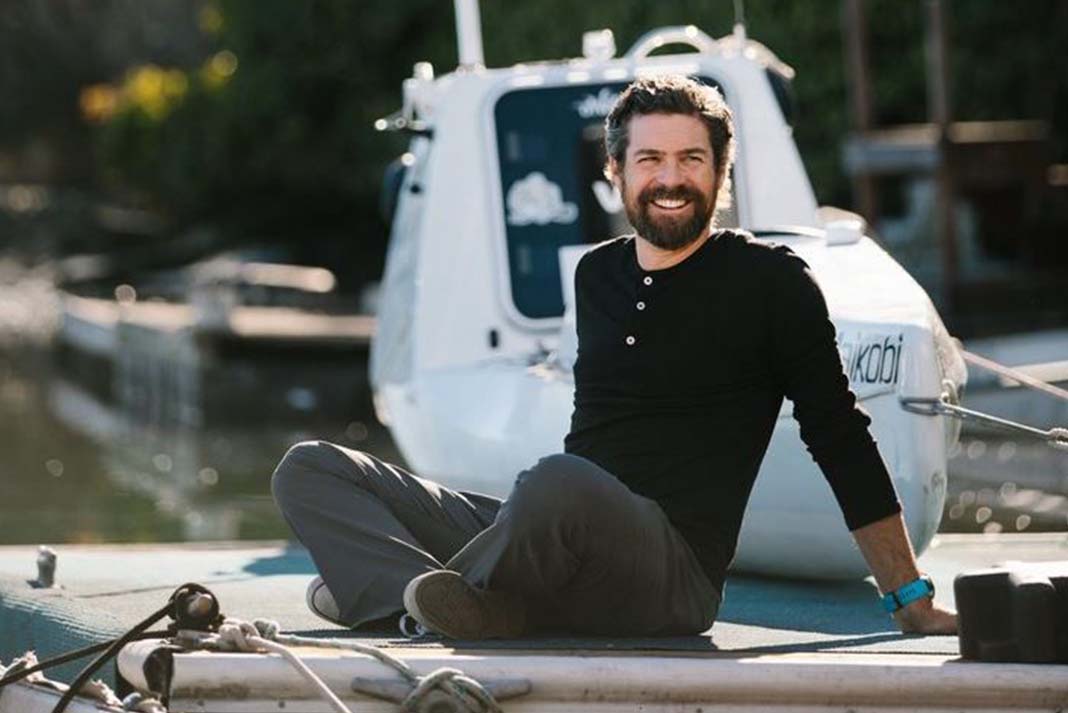
First Attempt
On June 4, 2021—just one week after setting out—Derreumaux ran into trouble. Ocean conditions had begun to deteriorate; winds of 55-65 kph generated monstrous 4.5 m waves. Derreumaux tried to deploy his sea anchor, but his equipment malfunctioned. He took shelter in the cabin of his kayak but was violently tossed around by his almost-parallel position to the axis of the waves.
It was only when water started to leak inside the cabin that he knew he couldn’t hold out any longer–he called the US Coast Guard in for rescue.
View this post on Instagram
Second Attempt
On June 1, 2022, Derreumaux will once more embark on the 2,400 nautical-mile (4,444 kilometers) solo trip across the mid-Pacific Ocean. Though, this time, he’s made some important changes.
In addition to training specifically for high wind situations off the coast of Santa Cruz, he’s installed a satellite communication system with an external antenna enabling him to make phone calls and emails from inside the cabin.
He’s added custom side panels to his craft to prevent water from entering the cockpit, as well as the addition of a manual bilge pump. Finally–perhaps most importantly–Derreumaux has modified the sea anchor system and its lines to the rudder and the daggerboard.
[ View all Safety and Rescue Equipment in the Paddling Buyer’s Guide ]
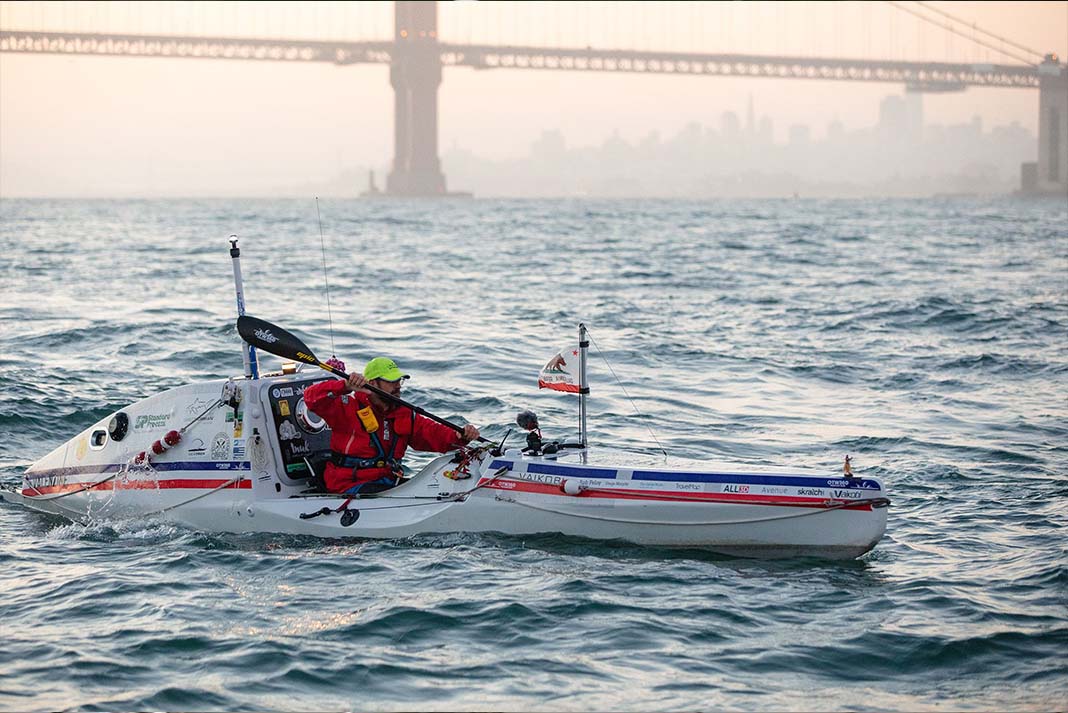
Derreumaux expects to complete his descent in 60-70 days, weather permitting. Starting each day at sunrise, he’ll paddle for 4-5 hours, breaking only for lunch, then paddle another 4-5 hours or more. He plans to wake up every 2 hours during the night to check on the boat. Follow updates and progress reports of the voyage here.
Quick Facts About The Craft:
- The craft is a single kayak with cabin, measuring seven meters long (23 feet). Made of carbon / epoxy composite.
- Cabin is a fully sealable self-righting survival “pod”
- Propulsion by kayak paddles with the possibility of using the Hobie Mirage Drive as a backup and alternative option for safety or in the event of injury.
- Empty hull weight estimate: 176 lbs. Estimated weight full is 800 lbs.
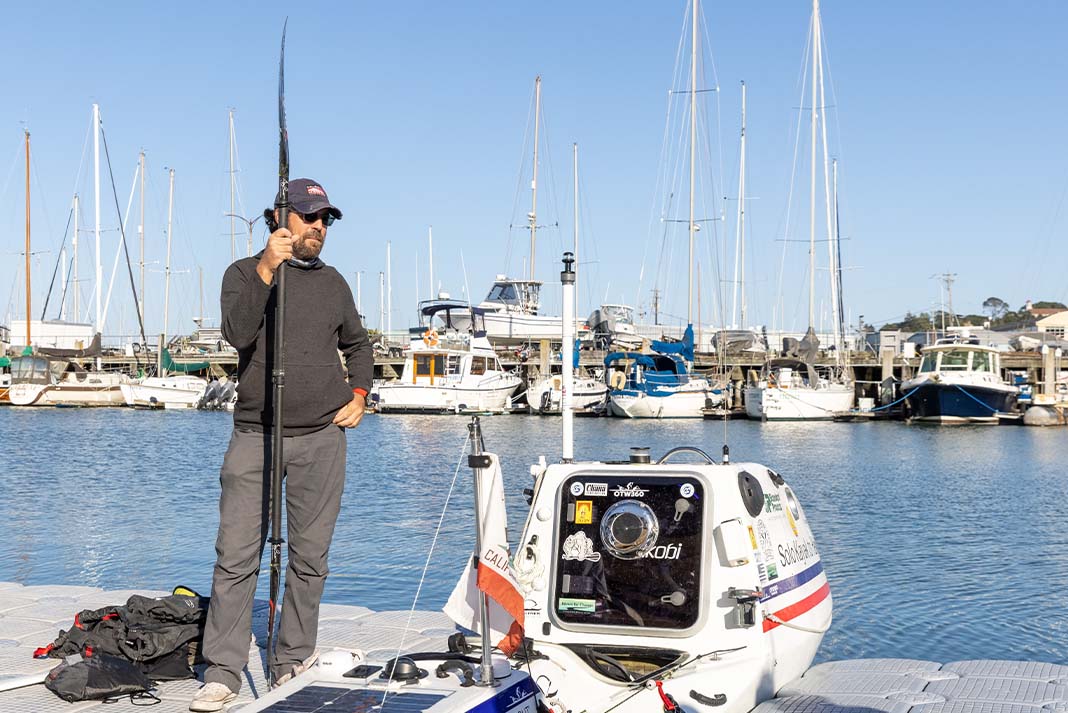
Boat Building Details:
- Building began October 20th, 2019, in England
- Designers are Rob Feloy & Daniel Davy. Daniel is a Naval Architect and Rob has extensive previous experience in designing kayaks and small craft. Dan and Rob have collaborated on various previous projects from kayaks to rowing boats including the successful “Trans-Tasman” double kayak.
- Build carried out by Rob’s company Inuk Kayaks. Inuk Kayaks have previously designed and build various long distance expedition craft including Peter Bray’s North Atlantic crossing kayak, Justin & James “Trans-Tasman” double kayak, Olly Hicks’ “Shetland Bus” kayak and again Olly’s Greenland to Scotland double kayak.




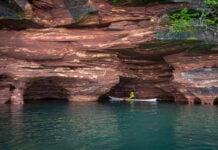
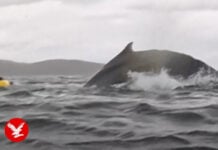
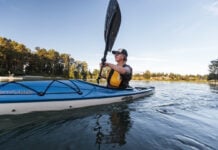
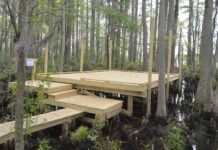

Can’t wait to follow your journey. I wish you the very best!
Thanks Steve! Aloha to you!
This is NOT a kayak!
He can be on an episode of “humans are awesome”. My arms started hurting just by thinking about how hard this is to achieve. Absolute legend for even attempting and for sure he will succeed!